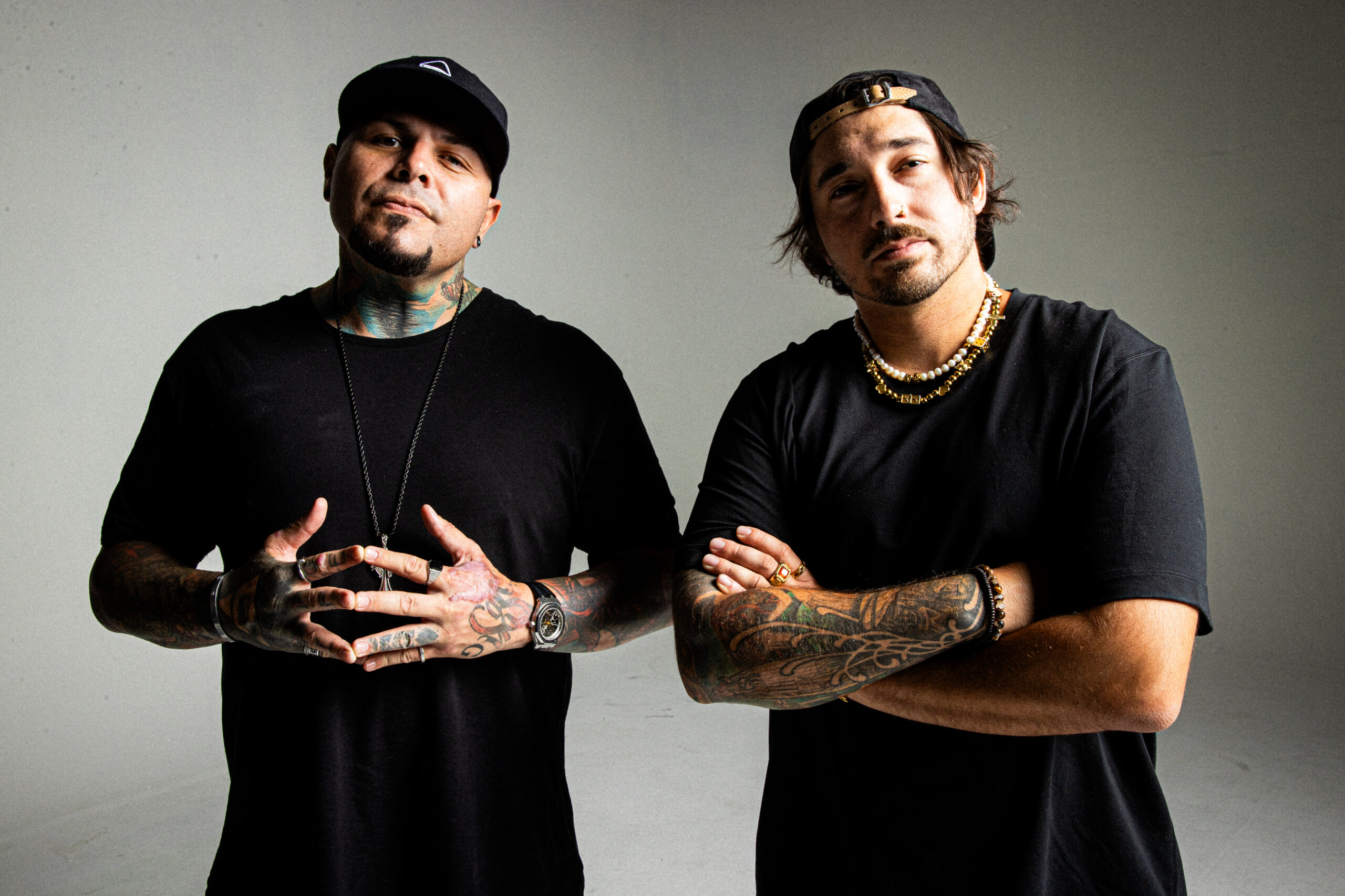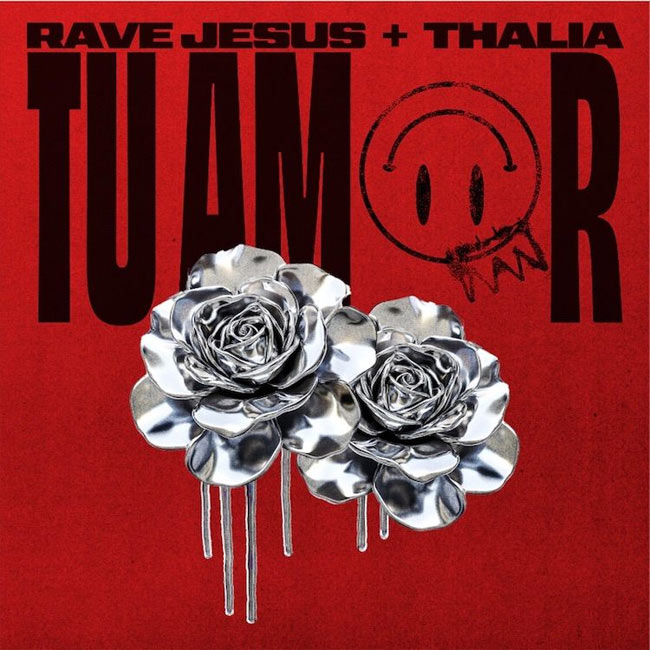
Fede Spamer – Musical Influences
Producer and DJ Fede Spamer continues to carve out a sound shaped by a broad tapestry of influences, all while pushing forward to reveal something authentic and original. Based in Buenos Aires but shaped by an international upbringing, his musical identity has grown out of a life immersed in diverse cultures, genres, and emotional textures – culminating in a style that honours his rich roots while reflecting a forward-facing creative vision.
We caught up with Fede to dig into the early inspirations that shaped his taste, the artists and genres that continue to guide his evolution, and the ever-shifting balance between influence and individuality.
Hi Fede! How’s it going today?
Hey! I’m doing great, thanks for asking. How about you?
Let’s start with your early influences – what kind of music were you surrounded by growing up, and what impact did that have on your musical taste?
Growing up, I was surrounded by many different kinds of music. My parents never worked in the industry, but they’ve always had a casual connection to music. My dad sang in a choir when he was young and played the guitar. My mom took piano and tap dance lessons as a child, and later on, she mostly just enjoyed listening. She has a deep love for orchestral music and would often take me to live performances, which became a special part of our routine together.
There was always music playing at home, from symphonic pieces to more mainstream pop. Even now, I still go to live performances with my mom at the Teatro Colón in Buenos Aires.
As a child, I also remember listening to artists like ABBA, Elvis Presley, Cher, Madonna, Argentine folk, and local names like Diego Torres. That helped me feel more connected to Argentine culture. I was born in Belgium and grew up between Switzerland, Japan, and Argentina before settling back here at 18. With all the moving around, music became my constant — a way to stay grounded through change.
Around age 12, I started getting into Electropop and mainstream EDM. But everything shifted when I discovered club-oriented Electronic Music – opening up a whole new world that completely changed the way I connected with sound.
You come from a strong Classical Music background. Could you share how this has shaped your ear for melody and structure?
Yes, of course! Classical training teaches you to appreciate melody and structure on a very detailed level – the way themes develop, how tension and release are balanced, and how different voices interact within a composition.
Having played Classical piano pieces by composers like Mozart, Chopin, Beethoven, and Bach, I developed a strong sensitivity to melodic phrasing and harmonic progression.
When producing Electronic Music, I often apply classical concepts like structure, motif development, and tension and release – adding emotional depth to a genre that tends to lean more toward rhythm and texture.
Can you recall the first Electronic Music artist or track that really shifted your perception of what music could be?
When I first got into club-oriented Electronic Music, I was mostly listening to Tech House, and I loved it. But one day, a friend invited me to see Eric Prydz live. I wasn’t very familiar with his music, so he sent me “Opus” to check out beforehand, and that track completely changed everything for me. The way his music unfolded and transported me to a completely different world – so far from what I was used to – shifted my entire perception of what Electronic Music could be.
It opened my mind to new sonic possibilities and helped me realise I wanted to create immersive, emotional experiences through sound.
How did your taste in Electronic Music evolve over time – were there key artists, styles, or scenes that opened new doors creatively?
As I mentioned earlier, Eric Prydz really changed how I understood DJ sets. Before that, I thought artists mostly mixed their own tracks with others’, and I associated solo performances with live sets – like those by Monolink or Juan Hansen.
That moment led me to Melodic Techno. A key track that pulled me in was ‘Pantheon’ by Goom Gum and Argy. It introduced me to the Afterlife sound, which resonated deeply – especially the way it draws from Classical Music.
What inspires me now is how more underground sounds – like those in Melodic House or Techno – are starting to appear in radio-friendly tracks.
I try not to be grounded in one scene. I connect with different communities and aesthetics, aiming to make music that feels approachable and emotionally engaging, while still carrying the depth and texture of the underground.
Lately, I’ve been really into Indie Dance and artists like Max Styler.
Are there producers today who continue to influence your approach to sound design, arrangement, or atmosphere?
There are so many – it’s hard to name them all.
But to give a few examples:
I recently watched Monolink’s latest performance for Cercle in Paris, and there was something about how immersed he was in the moment that really stayed with me.
KREAM constantly inspires me when it comes to sound design – their textures and overall production quality are incredible.
I also really admire Max Styler, Meduza, James Hype, Anyma, Adam Beyer, Innellea, 8Kays, TH;EN, Rebūke, Disfreq, Boris Brejcha, Argy, Alok, Eric Prydz, and Mau P, to name a few.
Outside of Electronic Music, are there any genres or artists you draw inspiration from?
Definitely. What I love most about Electronic Music is its creative freedom, and I’m especially drawn to artists and genres that offer more than surface-level appeal.
I’ve always had broad tastes – growing up on everything from the Black Eyed Peas and Arcade Fire to Gorillaz, Radiohead, CHVRCHES, Alan Walker, and Empire of the Sun. Lady Gaga’s ‘ARTPOP’ stood out for its sound design and conceptual ambition, while Madonna’s ‘Confessions on a Dance Floor’ is a favourite for the way it blends dance, pop, and emotional storytelling.
I also draw inspiration from Argentine artists like Miranda! and Babasónicos and indie/electronic acts like L’Impératrice, Hot Chip, and Metronomy.
Honestly, I’ve taken inspiration from so many places – each artist and sound has added something to how I approach music today.
Beyond the music itself, are there any artists you admire for how they handle the business side of their careers – whether that’s connecting with their audience on social media, their creative independence, or building a long-term vision?
I really admire Anyma for how he’s always reimagining his art and finding new ways to express himself, which feels very fresh and authentic.
James Hype is another big inspiration for me – his energy and the way he connects with the crowd are incredible.
I also really respect Peggy Gou. I love how she shares parts of her personal life alongside her music career, which helps her build a genuine connection with her audience. She’s always trying new things, pushing boundaries, and that openness resonates a lot with people.
For you, where does the balance lie between drawing inspiration from your influences and creating something that feels uniquely yours – something that defines the Fede Spamer sound?
For me, finding the balance between drawing inspiration and creating something uniquely mine is an ongoing journey. I deeply respect and learn from the artists and genres that have shaped my musical taste, but at the same time, I’m always pushing myself to reinterpret those influences through my own lens.
What defines the Fede Spamer sound isn’t just the sum of my inspirations – it’s how I combine them, filter them through my experiences, and express my own emotions and ideas.
Finally, is there a track you always return to when you need to reconnect with your creative headspace? Something that resets or recharges your focus?
I think “Breathe” by CamelPhat, Cristoph, and Jem Cooke is that track for me. It blends everything I love about Electronic Music – emotion, groove, atmosphere – it’s powerful but also deeply introspective. Every time I listen to it, it grounds me creatively and reminds me why I fell in love with this sound in the first place.
From our conversation, it is clear that Fede Spamer’s journey continues to be shaped by curiosity, range, and creative intent: a fusion of past and present influences distilled into something personal and continually evolving. As he continues to refine his sound, his focus remains on growth, originality, and pushing boundaries; appearing as an Artist in motion, he’s one to stay connected with, following him across social media to keep up with what’s coming next.
Fede Spamer OnlineSpotify | Soundcloud | Instagram


